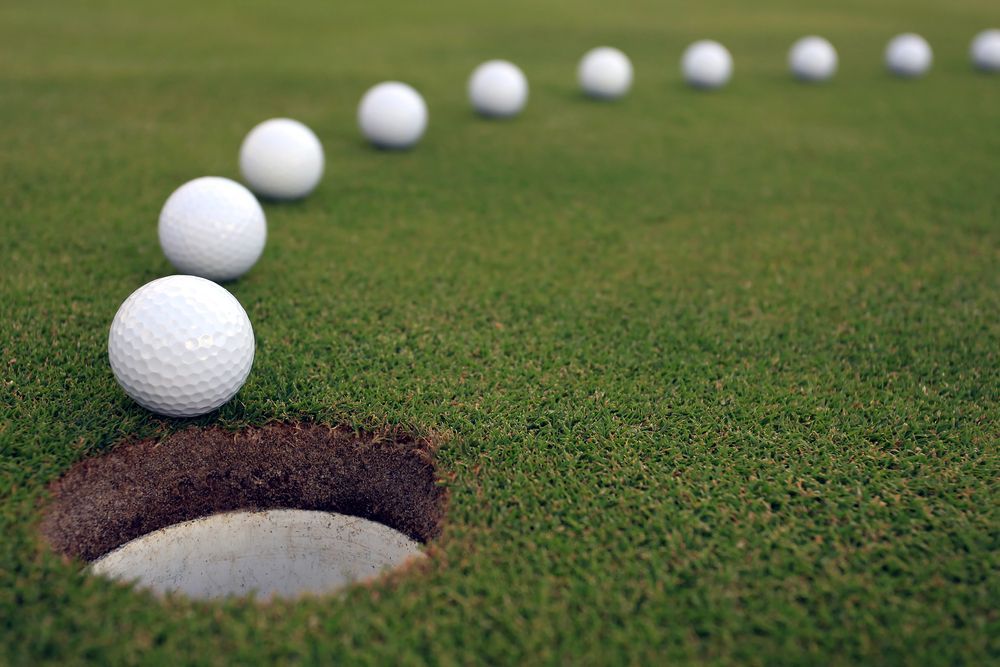April 24, 2025
The Art of Reading Greens: Mastering the Subtle Contours of the Game

How to Develop a Sharper Eye and a Better Stroke by Understanding the Surface Beneath Your Feet

For many golfers, putting is either a love affair or a complete mystery. It’s where championships are won and friendly rounds are lost. And more often than not, the difference between a perfect putt and a missed opportunity lies in the ability to read the green. Reading greens is not just about looking at the slope or the grain; it's about interpreting subtle information that the course provides. It’s about patience, observation, and intuition—all working in concert with a practiced stroke. Learning to read greens isn't just a skill; it's a journey of developing feel, precision, and understanding.
The Anatomy of a Green: Understanding the Canvas
Before you can master the art of reading greens, you need to understand what you're looking at. Greens vary in shape, size, grass type, and even soil composition. Each of these factors affects the speed and break of your putt. Golf architects design greens with intention—subtle tilts, deceptive humps, and protective slopes are all part of the game. Familiarizing yourself with the architecture of greens—whether they're pitched from back to front, sectioned into tiers, or crowned in the middle—will lay the groundwork for better reads.
The grass type is another key factor. Bentgrass, Bermuda, and Poa Annua each behave differently. Bentgrass tends to be smooth and predictable, especially in cooler climates. Bermuda, by contrast, introduces the additional challenge of grain—the direction in which the grass grows—which can dramatically alter a putt’s line and speed. Poa Annua often becomes bumpier as the day wears on. By identifying the type of grass and the condition it’s in, you can start anticipating how the ball will behave before you even take your stance.
Approaching the Green: Gathering Early Clues
Your read should begin long before you reach the green. As you walk up the fairway or approach from the cart path, start observing the general layout. Where is the high ground? How does the green fit into the surrounding terrain? Are there water hazards or bunkers that suggest a slope direction? Often, greens are designed to drain toward those features, giving you an early hint about the overall tilt.
Take your time walking up to the green. Don’t rush to mark your ball. Stand a few steps back and look at the slope from afar. This distant view can give you a better sense of the macro contours. Then, walk around the hole and view it from multiple angles—especially behind the hole and behind your ball. Your eyes will catch different elements depending on your perspective.

Learning to Feel the Slope: Feet as Your Sensors
One of the most underrated tools in green reading is your feet. When you walk around the green, especially as you approach your ball, pay close attention to how the slope feels beneath your shoes. Do you feel your weight shifting more to one side? Are your feet slightly higher on one step than the next? This tactile information can be even more reliable than your eyes.
Standing over your putt, take a moment to close your eyes and focus on balance. Is one foot higher than the other? Does your weight feel shifted? The human body is surprisingly adept at detecting tilt. By incorporating your sense of balance into your routine, you train yourself to read greens with more than just vision.
The Visual Read: Mapping the Putt with Your Eyes
After you’ve absorbed the general shape of the green and taken in what your feet have to say, it’s time to use your eyes to map out the putt. Crouch behind the ball and imagine a river flowing from your ball to the hole. Where would it curve? Would the water slow down or pick up speed? This visualization trick can make the break more obvious.
From behind the ball, trace a line with your eyes that represents the ideal start direction. Then move to the low side of the putt—this is often the best place to assess the break’s severity. Looking from behind the hole helps you see the putt’s final few feet and how much it will move right before dropping.
Your eyes are powerful, but they can be tricked by shadows, slopes, and even previous putts. Try not to stare too long at a single angle. Trust your initial impression and corroborate it with the data your feet and instincts have gathered.
Speed Versus Line: Why Pacing Rules All
One of the biggest mistakes amateur golfers make is obsessing over the line while ignoring speed. The truth is, speed controls everything. A putt hit too hard will hold a straighter line, while a slower putt will break more. If you consistently misjudge pace, even a perfect line won’t save you.
Practice tuning your eyes to the texture of the green. Is it shiny or dull? Shiny greens tend to be slicker, while duller, darker greens may be slower. Notice if the grass is lying down in a particular direction. This is especially important on Bermuda greens, where putting into the grain can drastically slow down a ball.
Understanding how speed affects your read also allows you to choose how aggressive or conservative you want to be. Some players prefer to “die” the ball into the cup, while others like a firm roll. Your approach will influence your read. There is no universally correct method—only what works consistently for your game.
Understanding Grain: The Invisible Influence
Grain is one of the most confusing and misunderstood elements of green reading. It refers to the direction in which the grass blades grow, and it can have a surprisingly strong influence on putt speed and break. When you're putting with the grain, the grass is laying down in your direction, and the ball rolls faster. Against the grain, the blades resist the ball’s movement, making it slower and possibly altering the break.
The easiest way to spot grain is by checking the cup itself. If one side of the hole is ragged or discolored, the grain is growing in that direction. You can also examine the shine of the green—grass tends to look shiny with the grain and darker against it.
Grain can compound or counteract slope. For instance, a downhill putt with the grain might be lightning fast, while an uphill putt into the grain may require much more force than expected. Learning to read and respect the grain can save you from countless three-putts.
Building a Consistent Pre-Putt Routine
Now that you’ve gathered all your data—slope, grain, speed, and line—it’s time to turn it into a routine. A consistent pre-putt routine is essential for converting reads into results. This routine should be simple, repeatable, and tailored to how you process information.
Start by standing behind the ball to commit to a line. Then take your practice strokes while visualizing the pace and break. Some players prefer to look at the hole during practice strokes, while others focus on an intermediate target along the line. Once over the ball, settle in quickly and pull the trigger. Avoid overthinking, as second-guessing often leads to deceleration or misalignment.
Over time, your routine becomes a comfort zone—a place where nerves quiet down and muscle memory takes over. The more reliable your process, the better you’ll putt under pressure.
Developing Instincts: Practice with Purpose
Reading greens is not just theoretical; it’s experiential. You develop instincts by observing, experimenting, and learning from every putt. When you practice putting, don’t just hit the same five-footers over and over. Create challenges. Try long breaking putts. Practice lag putting from different tiers. Test how uphill and downhill affects pace and line.
Keep a mental journal—or even a physical one—of putts you misread and why. Over time, patterns will emerge. You might discover you're consistently under-reading left-to-right breaks, or overestimating uphill pace. This self-awareness is invaluable.
Also, play different courses. Greens at a links-style course will behave differently from those at a parkland layout. The more greens you encounter, the richer your playbook becomes.
Trusting the Process: The Mental Game of Green Reading
Even when you’ve done everything right—read the slope, accounted for grain, picked the right pace—a putt might still miss. That’s golf. The important thing is to trust your process. Confidence grows from consistency, not perfection. Don’t let a single miss cause you to abandon a system that’s working over time.
The best putters in the world aren’t flawless, but they are committed. They don’t doubt their reads, and they don’t flinch in execution. Cultivating that mindset takes time. The green can feel like the loneliest place on the course—but it’s also where your best mental game can shine.
Accept that not every read will be right. What matters is building a library of experience, refining your feel, and trusting the effort you’ve put in. Over time, you’ll miss fewer putts, and you’ll learn something from every one you do.
Elevate Your Game, One Putt at a Time
Reading greens is an art form—one that blends science, feel, and psychology. It's about paying attention, staying curious, and refining your senses. From the slope under your feet to the glimmer of the grass in the sun, every detail tells a story. Your job is to listen.
Like any skill in golf, mastering green reading takes time and intention. There’s no magic trick, no single tip that will turn you into a putting machine overnight. But with patience, practice, and a commitment to learning, you can turn the green from a guessing game into a stage for confidence. So the next time you stand over a crucial putt, remember: the read is already there. It’s just waiting for you to find it.
More from Fairway Control












